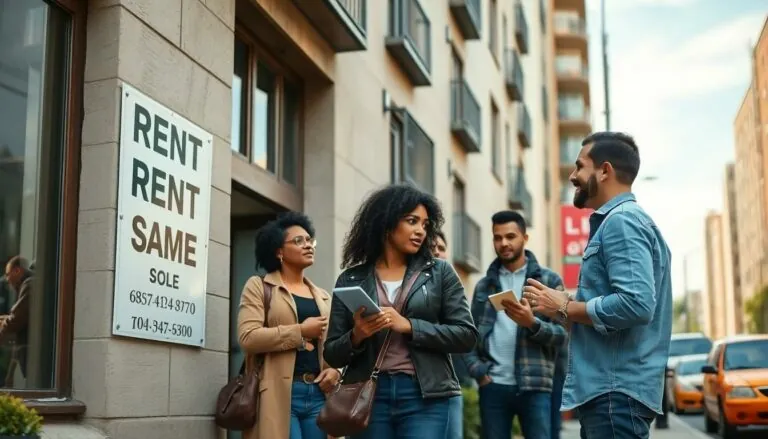Table of Contents
ToggleToys are the joyful chaos of childhood, but when they take over the living room, it’s time to reclaim the space. Imagine a world where Legos don’t become a surprise foot massage and where stuffed animals don’t stage a coup on the couch. With a few clever organizing ideas, parents can transform clutter into a neat and playful paradise.
Benefits Of Organizing Toys
Organizing toys offers multiple advantages for families. A tidy play area contributes to both enhanced aesthetics and efficient functionality.
Improved Space Efficiency
Maximizing available space becomes easier with organized toys. Toys can quickly accumulate, leading to clutter and disorganization. When utilizing storage solutions like bins, shelves, and baskets, families free up areas for other activities. Designated spots for each toy encourage children to clean up after themselves. This practice fosters responsibility while also optimizing room layouts, making spaces feel larger and more inviting.
Enhanced Child Safety
Child safety significantly improves when toys are organized. Hazards commonly arise from scattered toys, such as tripping over action figures or stepping on small pieces. By keeping toys neatly stored, families reduce the risk of accidents. Organized toy areas allow children to access toys easily without confusion. This accessibility promotes safe play, decreasing the likelihood of injuries associated with cluttered environments. Parents can relax, knowing their kids can play in a safer space.
Creative Toy Organizing Ideas
Creative solutions exist for organizing toys, making play areas neat and functional. Implementing smart storage options can transform cluttered spaces.
Using Storage Bins
Storage bins offer versatility and style for toy organization. Opt for clear containers to easily identify contents, making cleanup simple. Stackable designs help maximize vertical space, allowing for organization on shelves or in closets. Color-coding bins according to toy categories, like building blocks or plush animals, helps children recognize where items belong. Labeling bins with pictures or words encourages kids to participate in tidying up. This approach fosters responsibility while maintaining an organized environment.
Repurposing Furniture
Repurposing furniture combines function with creativity in toy organization. Utilize old bookshelves to display toys while keeping them accessible. An unused dresser can become a vibrant storage unit by using drawers for toys and craft supplies. Adding hooks to an old ladder creates a fun display for stuffed animals or bags. Reimagining pieces like coffee tables with hidden storage compartments can conceal toys while providing extra seating. These innovative solutions transform everyday furniture into engaging and organized spaces for children.
DIY Toy Organizers
Creating DIY toy organizers fosters an enjoyable play and tidy environment. Parents can use simple household items to keep toys in order while encouraging creativity in their children.
Crafting From Recyclables
Transforming recyclables into toy organizers presents a fun solution. Cardboard boxes work well for storing action figures or building blocks. Empty jars can hold small items like crayons and stickers, while old shoe organizers become ideal for hanging toys in unique ways. Parents can paint or decorate these items to add color, personalizing each storage solution. This approach not only promotes sustainability but also teaches kids the value of repurposing materials.
Building Custom Shelving
Building custom shelving can revolutionize toy storage. Wooden shelves provide durable spots for books, games, and toys in a playful display. Adjustable shelving allows families to modify height as children grow, adapting to new storage needs. Installing pegboards creates additional space for hanging toys, making it easier for kids to reach and tidy up. Crafting shelves together can engage children, fostering a sense of responsibility toward their toys while enhancing creativity in their play space.
Age-Appropriate Toy Organization
Organizing toys by age enhances efficiency and usability. Each age group has unique needs, making tailored organization crucial for playtime.
Ideas For Toddlers
Toddlers benefit from simple, accessible storage solutions. Use low, open bins to encourage independence during play. Label each bin with pictures to help little ones identify items like blocks or plush toys. Consider incorporating colorful drawers or baskets to make cleanup appealing. Rotating toys regularly keeps their interest alive. A low shelf with easy-to-reach toys fosters engagement and learning.
Ideas For Older Kids
Older kids require organization that aligns with their evolving responsibilities. Use labeled bins or boxes to categorize toys, games, and craft supplies. Designate shelves for specific activities, such as building sets or art materials. Encourage them to participate in organizing by selecting formats like stackable storage or clear containers for visibility. Customizable systems, such as pegboards or shelving units, allow them to adapt their space as interests change.
Transforming toy clutter into organized spaces can significantly enhance both functionality and aesthetics in a home. By implementing creative storage solutions and engaging children in the organizing process, families can foster a sense of responsibility and independence.
Utilizing everyday furniture and DIY projects not only maximizes space but also encourages children to take an active role in tidying up. Age-appropriate organization methods further ensure that toys are accessible and manageable, creating a safe and enjoyable play environment.
With the right strategies in place, parents can reclaim their living areas while nurturing their children’s creativity and responsibility. A well-organized play space leads to happier kids and a more peaceful home.



